|
Writing Young Digger
Background to the book
"Here's your next novel, Tony!"
By Anthony Hill
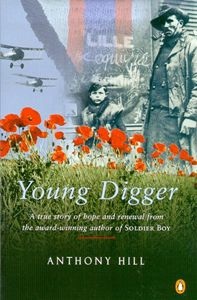
I first came across the remarkable story of Young Digger in early March 2000, not long after I finished writing Soldier Boy. My friend Ashley Ekins, then Senior Historian at the Australian War Memorial, had helped me greatly with the biographical novel about Jim Martin, the youngest-known Anzac. It had been a hard slog. But with the manuscript complete and awaiting the publisher’s verdict, I was looking forward to a bit of rest and recreation, when Ashley casually mentioned this other tale from the Great War: about an orphan boy who became a mascot for a squadron of Australian airmen and was smuggled home.
Inwardly I groaned and told myself, No more war books! But the writer’s nose twitched. We arranged lunch. And a week later Ashley was pushing an envelope across the table and saying, "Here’s your next novel, Tony." It only took a minute or two to read the few newspaper clippings it contained to convince me. Here indeed was not only my next book, but the companion volume to Soldier Boy.
It was apparent at once, as I acknowledge in Young Digger, that the stories of these two boys - James Martin and Henri Tovell - stand as profoundly moving metaphors on either side of the history of Australia’s involvement in the First World War, like a pair of bookends. Anzac and the Armistice. Leaving and homecoming. Gallipoli and the Western Front. Death and the renewal of hope.
Even as I ate lunch, I was already metaphorically putting on my tin helmet and climbing back into the literary trenches. And before going home that day, I visited the splendid Research Centre at the Australian War Memorial to start looking up the files.
The experience of writing Soldier Boy had a double benefit for this new project. I knew immediately what sort of a book it was to be: another biographical novel, blending the techniques of the historian, the journalist and novelist not only to tell Henri’s story as faithfully and accurately as I could, but to make those distant times and people live once more on the page for today’s readers. I also now knew how to go about finding the raw material I would need to make the factual building blocks from which Young Digger would be constructed. As I began work, I reflected again how fortunate we writers are in Canberra to have the information resources of great public institutions at our very doorstep.
Searching the Archives
Young Digger, London, Anzac Day 1919
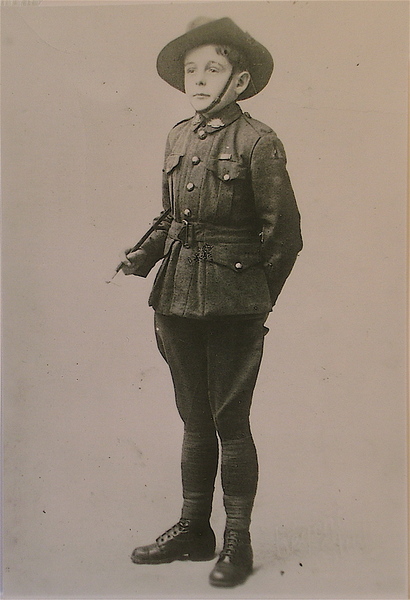   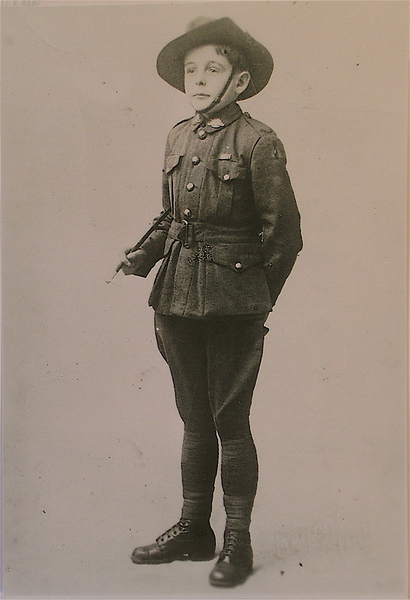 To begin with, there is the Australian War Memorial itself. Among its riches I discovered letters and photographs deposited by the family of 2nd Air Mechanic Timothy Tovell, who brought Digger back home in 1919; newspaper clippings; various accounts of the story among the papers of the war historian Arthur Bazley; the valuable photographic collection (much of it online) which gives visual substance and detail to the narrative; the reference library; manuscripts, war diaries, shipping manifests and so on. To begin with, there is the Australian War Memorial itself. Among its riches I discovered letters and photographs deposited by the family of 2nd Air Mechanic Timothy Tovell, who brought Digger back home in 1919; newspaper clippings; various accounts of the story among the papers of the war historian Arthur Bazley; the valuable photographic collection (much of it online) which gives visual substance and detail to the narrative; the reference library; manuscripts, war diaries, shipping manifests and so on.
It was all essential to help me understand Young Digger’s life within the broader context of his time and place. Given the many differing versions of his story written over the years, these resources also helped me to check, confirm or discard such data as I could, and to make reasonably considered assumptions where necessary. For unlike many historical novels where facts may be changed to suit the author’s literary needs, my own discipline with the biographical novel is always to adjust the story to fit the known facts and their most likely interpretations (which does not preclude some literary licence with the unknowns).
In this respect, one of my more important finds at the AWM was the official file of the former Department of the Interior. It contains key Commonwealth documents on two major aspects of Henri’s story: his arrival on the troopship Kaisar-i–Hind in June 1919 and subsequent permission to land, and his application for naturalisation in 1928, shortly before his death. This material not only substantiated and elaborated the published record. The 1928 papers also yielded the only account of the story in Henri’s own words (printed in Young Digger as Appendix I). Many of his recollections are plainly incorrect when tested against other evidence, including Tovell’s version (Appendix II). But Henri was recalling his childhood: indeed, the fact that he couldn’t remember his parents’ names, his age or birthplace, is strong confirmation that he was truly much younger than the authorities supposed.
More corroborating material for the story was found at theNational Archives of Australia and the National Library. At the Archives, for example, I came across a file detailing Henri’s employment with the Royal Australian Air Force from 1923, his death and memorial. The public service minutia gave presence to the lad’s lived reality; and the painful correspondence after he died gave voice to Tim Tovell’s alarm that he and his family had been cold-shouldered by the officers in far-away Melbourne. Newspapers, suburban and rural directories, electoral rolls and other reference material at the National Library, all helped to cement the known fabric of what may be termed Young Digger’s public career and circumstances.
Meeting Tim Tovell's family
Edie – Young Digger was her "big brother."
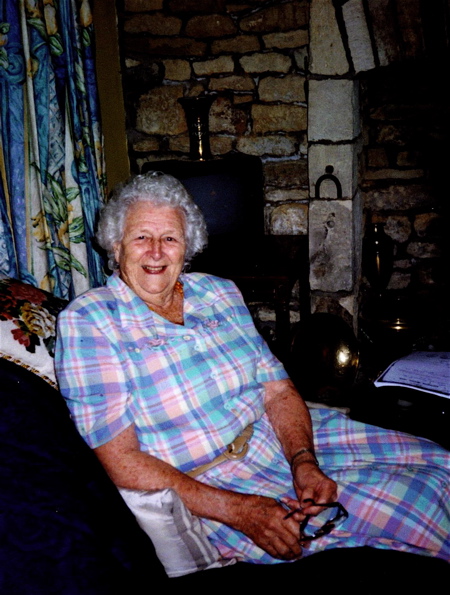 For the private self and his domestic life, I was immensely fortunate to be able to speak to members of Tim Tovell’s own family. His daughters - Mrs Edith Lock, and Mrs Nancy Elliot and her four children - spent much time with me sharing memories of their parents, the stories of Digger’s arrival home and his growing up with them as a boy in Queensland. I have deposited transcripts of these interviews at the AWM for future researchers, together with copies of letters, photos, diaries and other memorabilia which not only fill many gaps in the narrative but also give parts of it an entirely new dimension. For the private self and his domestic life, I was immensely fortunate to be able to speak to members of Tim Tovell’s own family. His daughters - Mrs Edith Lock, and Mrs Nancy Elliot and her four children - spent much time with me sharing memories of their parents, the stories of Digger’s arrival home and his growing up with them as a boy in Queensland. I have deposited transcripts of these interviews at the AWM for future researchers, together with copies of letters, photos, diaries and other memorabilia which not only fill many gaps in the narrative but also give parts of it an entirely new dimension.
The importance of these family meetings went far beyond the external facts of Henri’s story. They illuminated for me so many of those inner truths which are the novelists’ stock-in-trade. Both Nancy and Edie knew Henri: Nancy, in particular, was nearly six when her father and Digger came home in June 1919. They, and their younger brother Ed, are the last living people who can tell what Digger looked and sounded like; how he behaved; his mannerisms and personality.
Unlike Jim Martin, where there is nobody left who knew him, I was in this case able to test the persona with which I invested Henri against living recollections. The Gallic charm, the feistiness, the boyish cheek were all attested to: but the rhythms and cadences of speech also reflect character, and had I voiced them wrongly Tovell’s family would have told me. Indeed, they disliked the version of the story published in Norman Ellison’s Flying Matilda in 1957 for just this reason. He had Tim speaking as a colloquial Australian – whereas he was in fact the correct Englishman to the last. It was important to reflect this in Young Digger, partly in the interests of objective truth, and partly to cast light on those subjective areas of the imagination which are also, in my view, significant elements of a biographical novel.
If people from the past are to live on the page, then it is important that they once again breathe and speak and feel and think and act, as do their readers. Of course these creative techniques are traditionally more the domain of the fiction writer rather than the strict biographer. But as I observed in a paper on Soldier Boy, fiction can reveal its own truths about motive, character and events, if the writer remains faithful to the subject. I know some people are not quite comfortable about blending such ideas in an ostensible work of non-fiction. Yet during the writing of Young Digger I had a most revealing experience of just how valuable the approach can be.
Re-living history
One of the most poignant aspects of the story is that, on the day Tovell wrote home to say he was bringing Digger back to Australia – 31 January 1919 – his own little son Timmy died of infantile paralysis. The family memory is very clear that their mother, Gert, drove with the boy in a buggy thirty miles across the plains from Jandowae to the Dalby hospital – but that Timmy died in her arms before she arrived.
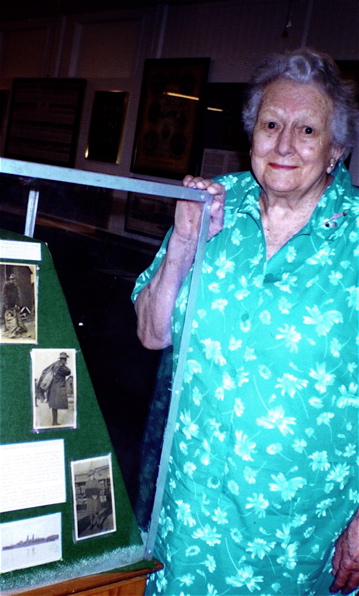 It was to be a high point of the book: yet Nancy, who was five-and-a-half at the time, had no recollection of the event. We thought it may have been so traumatic she’d blocked it from her memory. I’d visited Jandowae and driven across the plain, and wrote a version of the story using this interpretation as a basis. I sent it to Nancy hoping the dramatisation might trigger further memories. It was to be a high point of the book: yet Nancy, who was five-and-a-half at the time, had no recollection of the event. We thought it may have been so traumatic she’d blocked it from her memory. I’d visited Jandowae and driven across the plain, and wrote a version of the story using this interpretation as a basis. I sent it to Nancy hoping the dramatisation might trigger further memories.
Indeed it did. Nancy thought they were living on a farm with friends, Mr and Mrs Lee. She recalled bushfires and a carpet snake. The Lees had young children; and as we talked it through, we realised that Nancy probably couldn’t remember the buggy ride with Timmy because she almost certainly wasn’t there. Her mother surely would have left the little girl in Mrs Lee’s care, rather than take her with the sick child into Dalby. It seemed reasonable. I wrote a second version of the nightmare ride, in which Nancy was left behind and Mr Lee drove the buggy.
Again I sent it to Nancy, hoping it might trigger more memories – and again it did. She remembered that the Lees had gone to the coast, and her mother had moved into town. Nancy used a very specific word: it was the ‘plague time', a term used by the local newspapers in early 1919 to describe the Spanish influenza epidemic. She remembered Gert making lots of beef tea – and of the ‘very sad time’ when she went to stay by herself with the police sergeant’s family, the Behm’s. It could only have been when Timmy died.
So I wrote the third version. I still had to make assumptions – that a police constable, for example, drove the buggy, because research showed the train to Dalby ran every second day. Yet I believe that by using the novelists' techniques of speech, emotion, thought, and description to recreate the scene as vividly as I could, I was able to make the event live once again in Nancy’s memory, and thus approach as near the reality of it as is possible after 80 years. And that, I take it, is sufficient justification for my approach to the biographical novel.
Nancy with the smuggling photos at Oakey military museum
"Novelists of the past"
Of course it is subjective: but then, so is all telling of history. The modern age has at last realised that there is no such thing as one objective, immutable historical truth, but rather a multitude of perspectives upon the past . So it is that my interpretation of Henri Tovell’s story, like Jim Martin’s before him, is just that: a personal view of those far-off events. It has been predicated on a careful use of source materials, oral history and a not unreasonable approach to assumptions, for which I have produced a set of Endnotes as a guide to others. But I hope it has also been enlivened by my own imagination – stimulated by conversation and reading, the landscapes through which I travelled in Europe and Australia, and my own experience of life – to create a narrative of the past that is accurate, plausible and ‘truthful’ in the deepest sense of that word.
The scholar and author, Dr Pierre Ryckmans, once argued that it was the mission of the historian to imagine the past. History, he said, is not believed until a writer has invented it well, and he added, ‘Novelists are the historians of the present; historians are the novelists of the past.’
Others will judge whether I have imagined Young Digger well, and done justice to the story as it inspired me when I first saw those few newspaper clippings pushed the lunch table. "Here’s your next novel, Tony." But as to the force of Dr Ryckmans’ sentiments, I can only concur.
Anthony Hill, July 2002
|